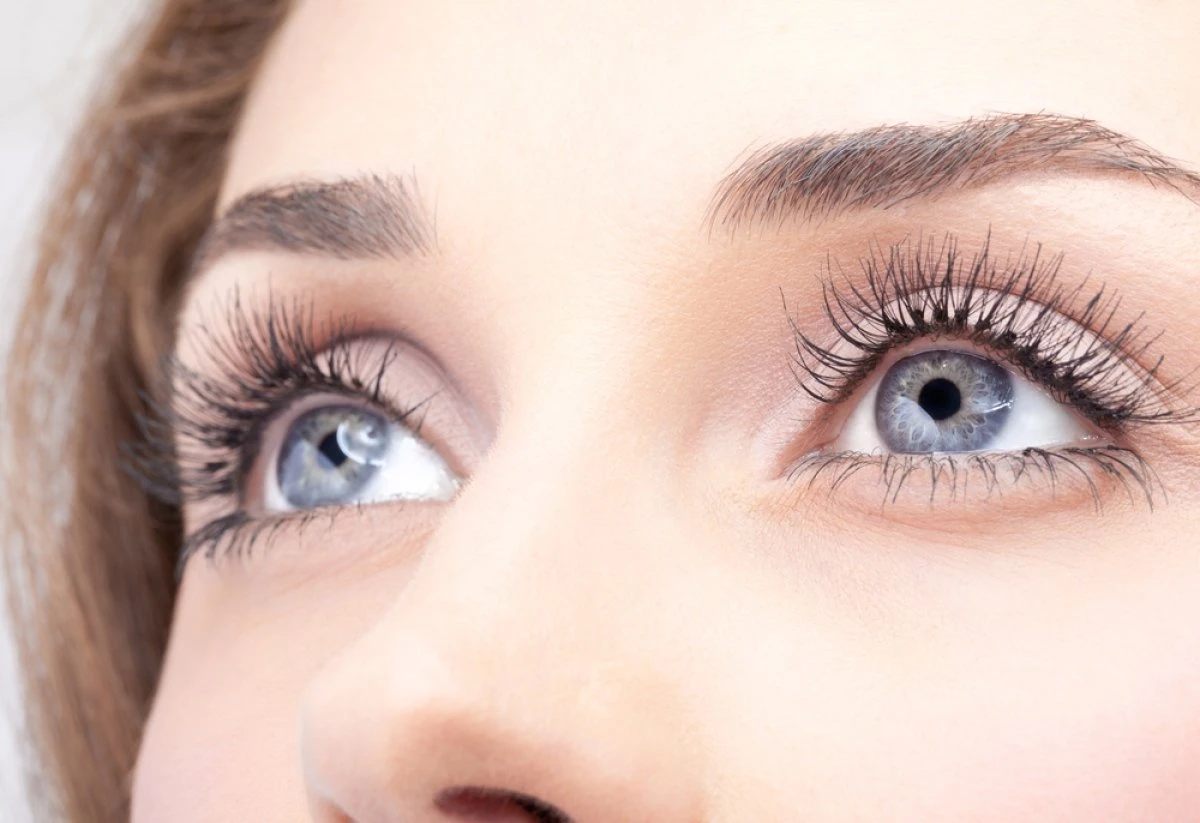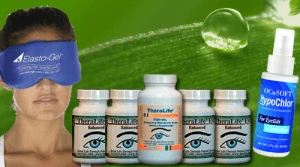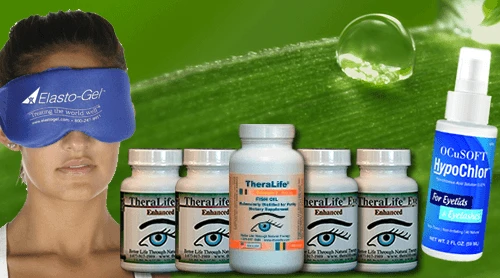For those suffering from blepharitis, choosing the right eye makeup is essential to manage symptoms and maintain eyelid health. Theralife offers a unique solution with its oral eye treatment care, setting it apart as the only company providing this specialized approach. Theralife’s products are designed to be hypoallergenic, ophthalmologist-tested, and free from parabens, fragrances, and formaldehyde-releasing preservatives, ensuring safe and non-irritating use.
Their range includes water-based, fragrance-free mascaras and gentle mineral or plant-derived eyeliners that minimize irritation of the lid margins. Long-lasting, allergen-free, natural powder-based eyeshadows help prevent flare-ups, while gentle, oil-free removers support eyelid health. By utilizing Theralife’s meticulously safe products, you can maintain comfort and style while supporting your eyelid health.
Explore Theralife’s top product choices and expert usage tips to enhance your eye care routine and effectively manage blepharitis symptoms.
Best Oral Treatment from TheraLife
Add To Cart
Key Takeaways
- Choose hypoallergenic, fragrance-free mascaras and eyeliners that are ophthalmologist-tested and water-based for sensitive, blepharitis-prone eyes.
- Opt for eyeshadows from hypoallergenic, dermatologist-recommended brands, free of parabens, synthetic fragrances, and irritating pigments.
- Select mineral-based or natural eyeliners and mascaras that avoid parabens, phenoxyethanol, and formaldehyde-releasing preservatives.
- Prefer powder eyeshadows over creams to minimize flaking and avoid applying product too close to the lash line.
- Remove all eye makeup gently with oil-free, sensitive-eye removers and use warm compresses to maintain eyelid health.
Choosing Blepharitis-Friendly Eye Makeup: What to Look For
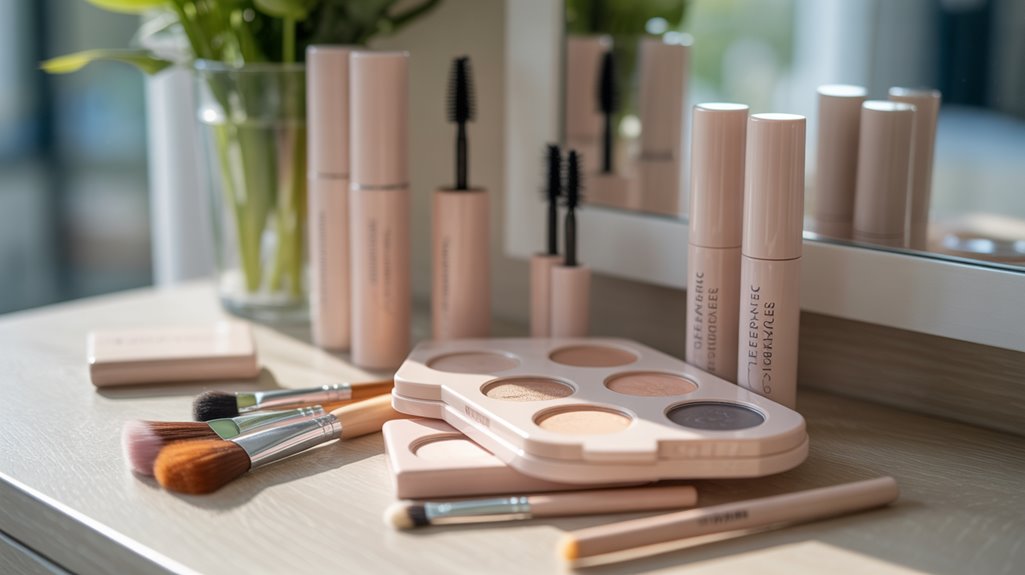
When selecting eye makeup for blepharitis, prioritize hypoallergenic products formulated without common irritants such as fragrances, parabens, and formaldehyde-releasing preservatives. You’ll want to check for products that list natural ingredients, as these are less likely to provoke inflammation or exacerbate eyelid sensitivity. Choose brands endorsed by dermatologist recommendations, as these are more likely to undergo rigorous safety testing and exclude known allergens. Carefully review ingredient lists, avoiding pigments and waxes associated with irritation. Opt for water-based formulations, since oil-based products may clog meibomian glands and worsen symptoms. Look for ophthalmologist-tested labels, which indicate suitability for sensitive eyes. By making evidence-based choices, you’ll reduce the risk of flare-ups and maintain periocular health while safely enhancing your appearance. Additionally, integrating warm compress application into your routine can help loosen clogged oils in your eyelid glands, further supporting eye health and comfort.
Top Hypoallergenic Mascaras for Sensitive Eyes
Although mascara can enhance the eyes, individuals with blepharitis require formulations that minimize the risk of irritation and allergic reactions. When selecting a mascara, prioritize products labeled hypoallergenic and ophthalmologist-tested. Formulas with natural ingredients, such as chamomile extract or aloe vera, are less likely to provoke inflammation or exacerbate blepharitis symptoms. Fragrance-free formulas are essential, as added scents commonly trigger sensitivity in the delicate periocular area. Look for mascaras that exclude common allergens like parabens and phenoxyethanol. Water-based formulations are preferable over waterproof variants, as they’re easier to remove and reduce residue buildup along the lash line. Consistent use of hypoallergenic mascaras will help you maintain ocular surface health while still enjoying enhanced lashes, even with sensitive, blepharitis-prone eyes. Additionally, using hot compresses can help unclog meibomian glands, which can improve overall eye health for those with blepharitis.
Best Eyeliners That Won’t Irritate Blepharitis-Prone Lids
Several eyeliner formulations cater specifically to those with blepharitis-prone lids by minimizing irritants and enhancing ocular surface safety.
When selecting an eyeliner, prioritize options labeled as ophthalmologist-tested and fragrance-free. Avoid traditional waxy pencils and waterproof formulas, which can contain preservatives and polymers that aggravate sensitive skin.
Instead, opt for natural eyeliner options that use plant-derived pigments and exclude parabens, sulfates, and formaldehyde-releasing agents.
Consider the following evidence-based choices:
- Mineral-based eyeliners: These provide gentle definition without synthetic dyes, reducing allergic reactions.
- Gel or cream liners in sterile packaging: These minimize bacterial contamination and are less likely to flake or migrate.
- Hypoallergenic felt-tip liners: These allow precise application and are formulated with sensitive skin considerations, avoiding common irritants.
For those dealing with blepharitis, warm compresses are recommended 2-4 times daily to improve blood circulation and reduce inflammation, which can also help alleviate symptoms when paired with eye makeup products.
Always remove eyeliner thoroughly to maintain lid hygiene.
Safe Eyeshadow Picks for Comfort and Style
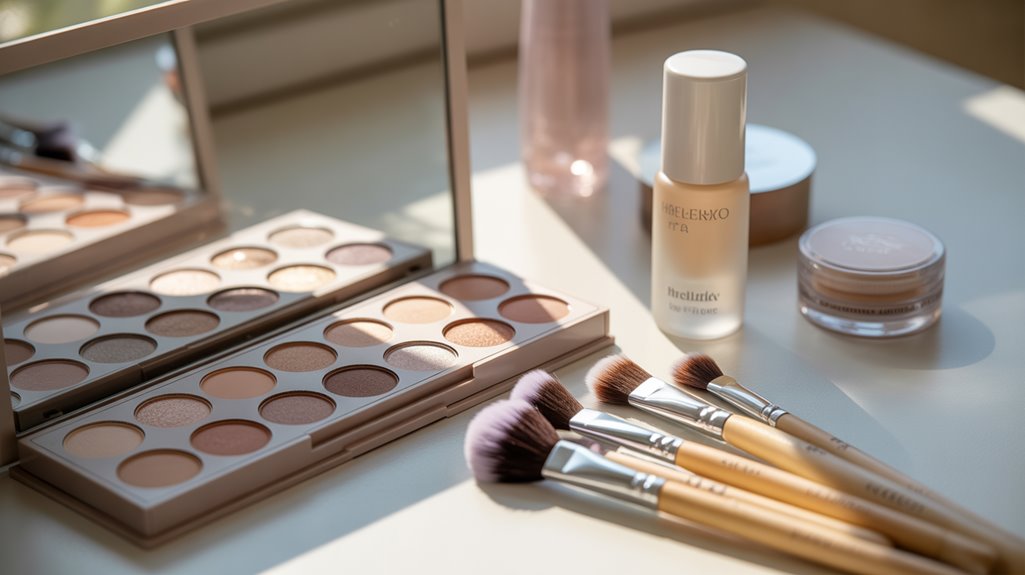
If you have blepharitis, selecting an eyeshadow requires careful consideration of both formulation and application technique to minimize irritation. Choose natural eyeshadow options that are free of common allergens like parabens, synthetic fragrances, and talc, as these can exacerbate eyelid inflammation. Hypoallergenic, ophthalmologist-tested brands offer greater reassurance for sensitive eyes. Powder shadows tend to be less irritating than creams, but always avoid loose pigments that can flake into the eye. Opt for long lasting formulas to reduce the need for touch-ups, therefore limiting repeated manipulation of the delicate eyelid margin. When applying, use clean brushes and avoid applying shadow too close to the lash line, as this area is most vulnerable. Prioritize products with transparent ingredient lists for ideal eyelid comfort and style. Eyelid hygiene is crucial for managing blepharitis, as poor cleaning can exacerbate symptoms.
Essential Eye Makeup Removal Tips for Blepharitis
When managing blepharitis, effective eye makeup removal is a critical step in preventing further irritation and maintaining eyelid hygiene. Choose products and routines that prioritize gentle cleansing and irritation prevention to avoid exacerbating symptoms. Use fragrance-free, ophthalmologist-recommended removers, and always handle the eyelid margin with care. Adopting a meticulous removal process reduces debris accumulation and supports overall ocular surface health. Here’s how to optimize your eye makeup removal routine:
- Select a gentle, oil-free remover: Avoid harsh chemicals and opt for hypoallergenic formulas designed for sensitive eyes.
- Apply with soft, lint-free pads: Gently wipe without excessive rubbing to prevent mechanical irritation and preserve the eyelid’s integrity.
- Rinse thoroughly with lukewarm water: Verify all residues are eliminated, minimizing the risk of inflammation or recurrence of blepharitis symptoms.
In addition to careful makeup removal, incorporating warm compresses into your routine can improve meibomian gland function, reducing eyelid inflammation and enhancing overall eye comfort.
Best Oral Treatment from TheraLife
Add To Cart
Frequently Asked Questions
Can I Wear Contact Lenses With Eye Makeup if I Have Blepharitis?
Yes, you can wear contact lenses with eye makeup if you have blepharitis, but you must prioritize contact lens hygiene.
Always insert your lenses before applying makeup, and use hypoallergenic, non-flaking products. Avoid applying makeup to the waterline to reduce irritation risk.
Remove lenses before taking off makeup to prevent contamination. Consistent lid hygiene and careful makeup application tips are essential to minimize inflammation and maintain ocular surface health.
Consult your eye care professional regularly.
Are There Natural or DIY Eye Makeup Options Safe for Blepharitis?
You might consider natural remedies and safe ingredients if you’re looking for DIY eye makeup options with blepharitis.
Choose hypoallergenic, fragrance-free products, and avoid common irritants like parabens or sulfates. Use mineral-based pigments, organic oils such as jojoba, and sterile application tools.
While some natural recipes exist, clinical evidence supporting their safety is limited. Always patch-test new products and consult your ophthalmologist before trying any homemade or natural eye makeup.
How Often Should I Replace My Eye Makeup Products With Blepharitis?
Prioritize makeup hygiene, monitor product longevity, and minimize contamination risks.
With blepharitis, you should replace mascara and liquid eyeliner every three months, cream eyeshadows every six months, and powder products every twelve months.
Don’t share products, always use clean applicators, and never apply makeup if you’re experiencing an active flare-up.
These evidence-based intervals reduce microbial growth and help maintain ocular surface health, supporting both effective blepharitis management and ideal eye safety.
Can Eye Makeup Worsen or Trigger a Blepharitis Flare-Up?
Yes, eye makeup can worsen or trigger a blepharitis flare-up.
You should know that certain makeup ingredients, such as preservatives, fragrances, and waxes, act as potential flare up triggers by irritating the delicate eyelid margins.
Clinical evidence suggests that these substances can disrupt the tear film and exacerbate inflammation.
To minimize risk, select hypoallergenic, ophthalmologist-tested products and avoid sharing eye makeup.
Always remove makeup thoroughly to maintain ideal eyelid hygiene.
Should I Avoid All Waterproof Eye Makeup With Blepharitis?
When you’re battling blepharitis, waterproof mascara may magnify mischief. Its stubborn staying power requires rigorous removal, which can irritate delicate eyelids and exacerbate inflammation.
Clinically, experts recommend avoiding waterproof eye makeup because removal often demands harsher techniques or solvents that can worsen symptoms.
Instead, choose gentle, non-waterproof formulas and prioritize meticulous, mild makeup removal to minimize mechanical and chemical trauma, maintaining ocular surface health and preventing potential blepharitis flare-ups.
Best Oral Treatment from TheraLife
Add To Cart
Conclusion
Navigating eye makeup with blepharitis doesn’t have to be daunting, especially with the right products from TheraLife. As the only company offering oral eye treatment care, TheraLife provides effective solutions for blepharitis sufferers. Their products, designed to target the root causes of blepharitis and other eye conditions, ensure reduced flare-ups and enhanced eye health.
Prioritizing gentle and hypoallergenic makeup choices, such as fragrance-free mascaras, gentle eyeliners, and safe eyeshadows, is essential. TheraLife’s unique approach not only supports ocular health but also allows for stylish eye enhancement without compromise. Remember, diligent hygiene and non-irritating makeup removal are as critical as the application process. With TheraLife’s clinical strategies and products, you can confidently maintain both your eye health and style. Stay vigilant in your eye care routine, and your eyes will thank you in the long run.
References
- 1.Bowling JJ. Clinical Ophthalmology: A Systemic Approach. 7th ed. New York: Elsevier Saunders; 2011. pp. 34–39. [Google Scholar]
- 2.Lemp MA, Nichols KK. Blepharitis in the United States 2009: a survey-based perspective on prevalence and treatment. Ocular Surface. 2009;7(Suppl 2):1–14. doi: 10.1016/s1542-0124(12)70620-1. [DOI] [PubMed] [Google Scholar]
- 3.Nelson JD, Shimazaki J, Benitez-del Castillo JM, et al. The international workshop on meibomian gland dysfunction: report of the definition and classification subcommittee. Invest Ophthal Vis Sci. 2001;52(4):1930–1937. doi: 10.1167/iovs.10-6997b. [DOI] [PMC free article] [PubMed] [Google Scholar]
- 4.Nemet AY, Vinker S, Kaiserman I. Associated morbidity of blepharitis. Ophthalmology. 2011;118(6):1060–1068. doi: 10.1016/j.ophtha.2010.10.015. [DOI] [PubMed] [Google Scholar]
- 5.McCulley JP, Dougherty JM. Blepharitis associated with acne rosacea and seborrheic dermatitis. Int Ophthalmol Clin. 1985;25(1):159–172. doi: 10.1097/00004397-198502510-00010. [DOI] [PubMed] [Google Scholar]
- 6.Groden LR, Murphy B, Rodnite J, Genvert GI. Lid flora in blepharitis. Cornea. 1991;10(1):50–53. [PubMed] [Google Scholar]
- 7.Huber-Spitzy V, Baumgartner I, Bohler-Sommeregger K, Grabner G. Blepharitis – a diagnostic and therapeutic challenge: report on 407 consecutive cases. Graefes Arch Clin Exp Ophthalmol. 1991;229(3):244–247. doi: 10.1007/BF00167872. [DOI] [PubMed] [Google Scholar]
- 8.Bernardes TF, Bonfioli AA. Blepharitis. Semin Ophthalmol. 2010;25(3):79–83. doi: 10.3109/08820538.2010.488562. [DOI] [PubMed] [Google Scholar]
- 9.McCulley JP, Dougherty JM, Deneau DG. Classification of chronic blepharitis. Ophthalmology. 1982;89:1173–1180. doi: 10.1016/s0161-6420(82)34669-2. [DOI] [PubMed] [Google Scholar]
- 10.American Academy of Ophthalmology Preferred Practice Pattern: Blepharitis. Oct, 2012. [Accessed November 10, 2014]. revision. Available from: http://one.aao.org/preferred-practice-pattern/blepharitis-ppp–2013.
- 11.Din N, Patel NN. Blepharitis – a review of diagnosis and management. Int J Ophthalmol Prac. 2012;3(4):150–155. [Google Scholar]
- 12.Duncan K, Jeng BH. Medical management of blepharitis. Cur Opin Ophthalmol. 2015;26(4):289–294. doi: 10.1097/ICU.0000000000000164. [DOI] [PubMed] [Google Scholar]
- 13.Scheinfeld N, Berk T. A review of the diagnosis and treatment of rosacea. Postgrad Med. 2010;122(1):139–143. doi: 10.3810/pgm.2010.01.2107. [DOI] [PubMed] [Google Scholar]
- 14.Probst LE. Bacterial eyelid infections. In: Krachmer JH, Mannis MJ, Holland EJ, editors. Cornea. Philadelphia, PA: Elsevier Mosby; 2005. pp. 495–500. [Google Scholar]
- 15.McCulley JP. Blepharoconjunctivitis. Int Ophthalmol Clin. 1984;24(2):65–77. doi: 10.1097/00004397-198424020-00009. [DOI] [PubMed] [Google Scholar]
- 16.Ficker L, Ramakrishnan M, Seal D, Wright P. Role of cell-mediated immunity to staphylococci in blepharitis. Am J Ophthalmol. 1991;111(4):473–479. doi: 10.1016/s0002-9394(14)72383-9. [DOI] [PubMed] [Google Scholar]

